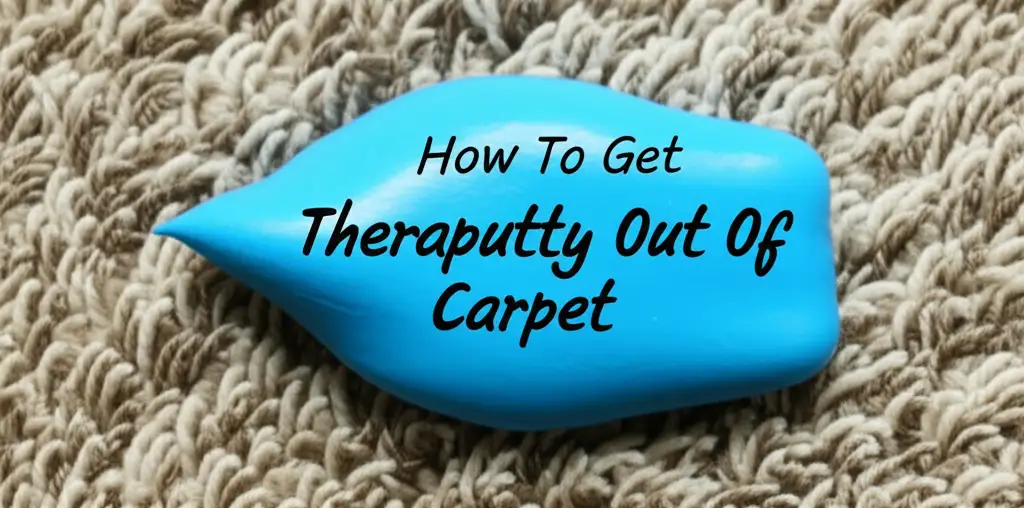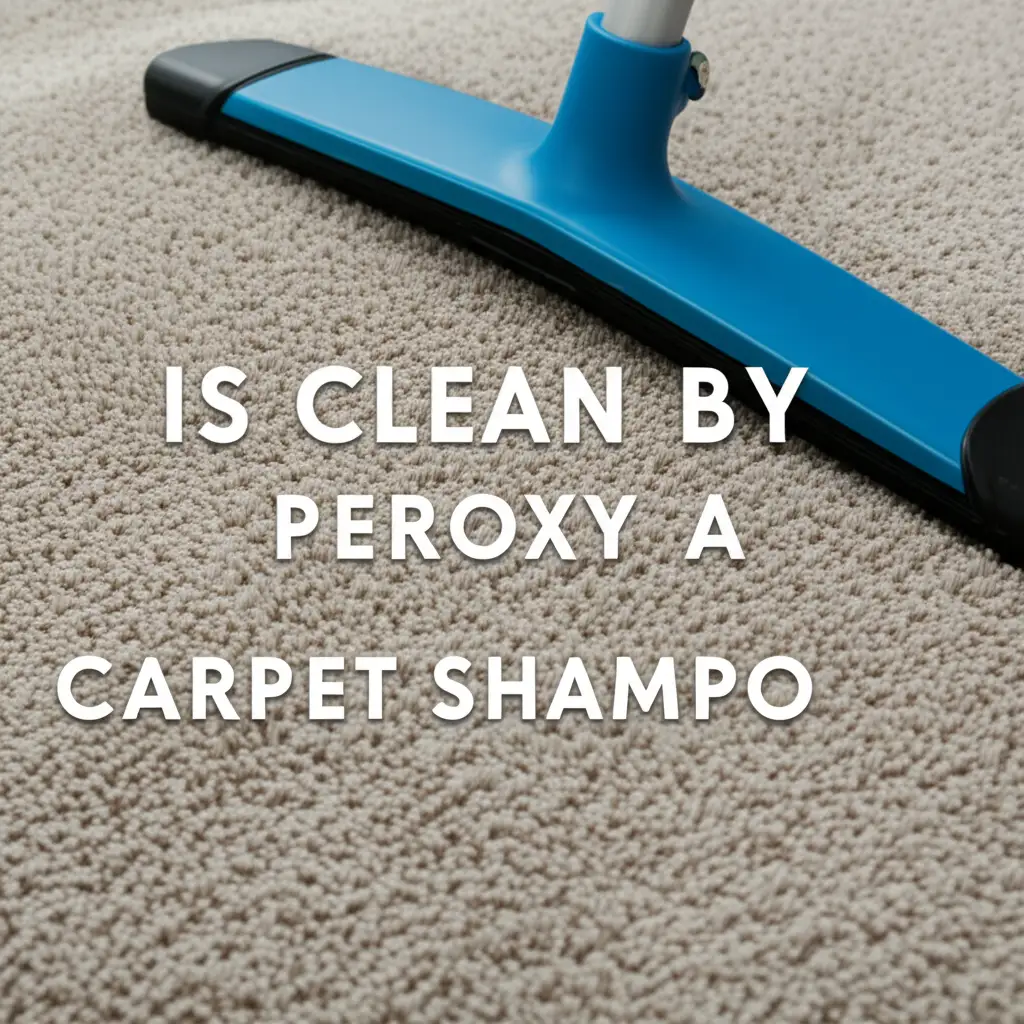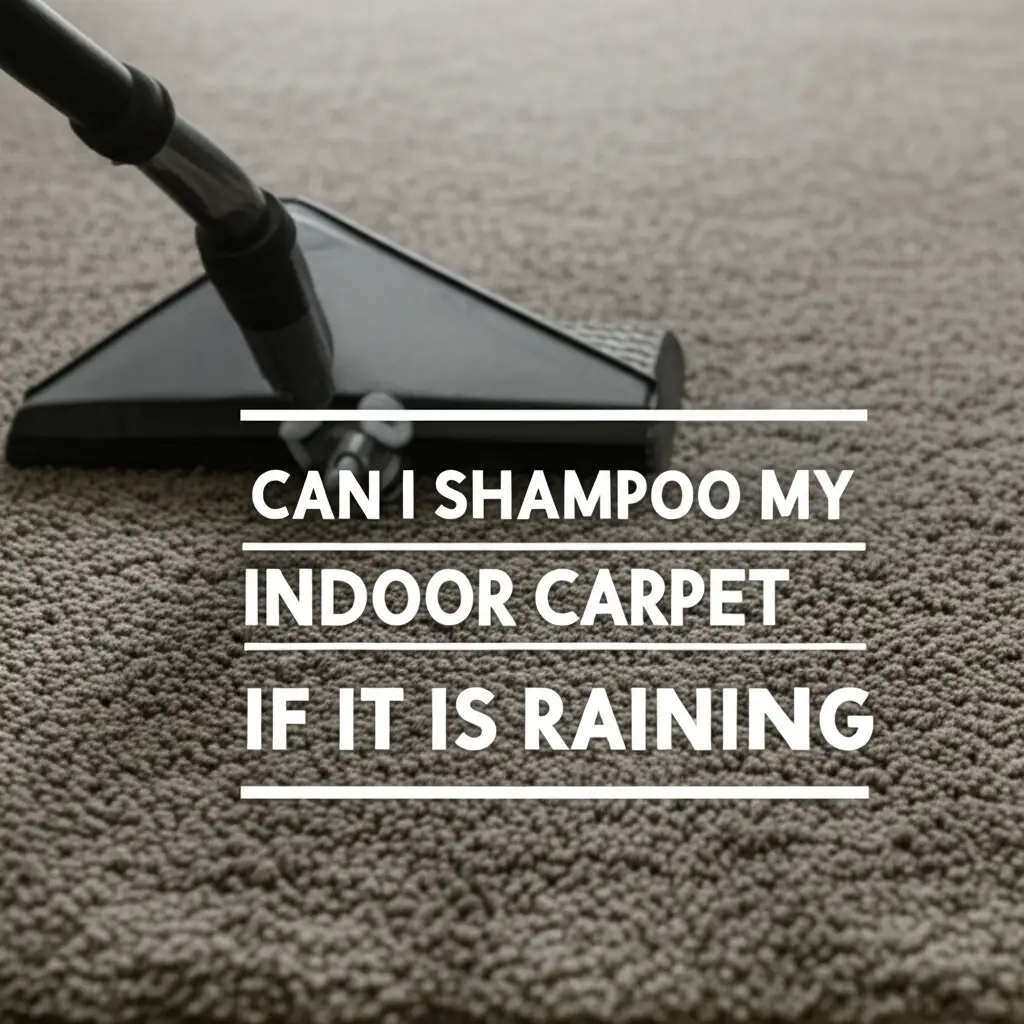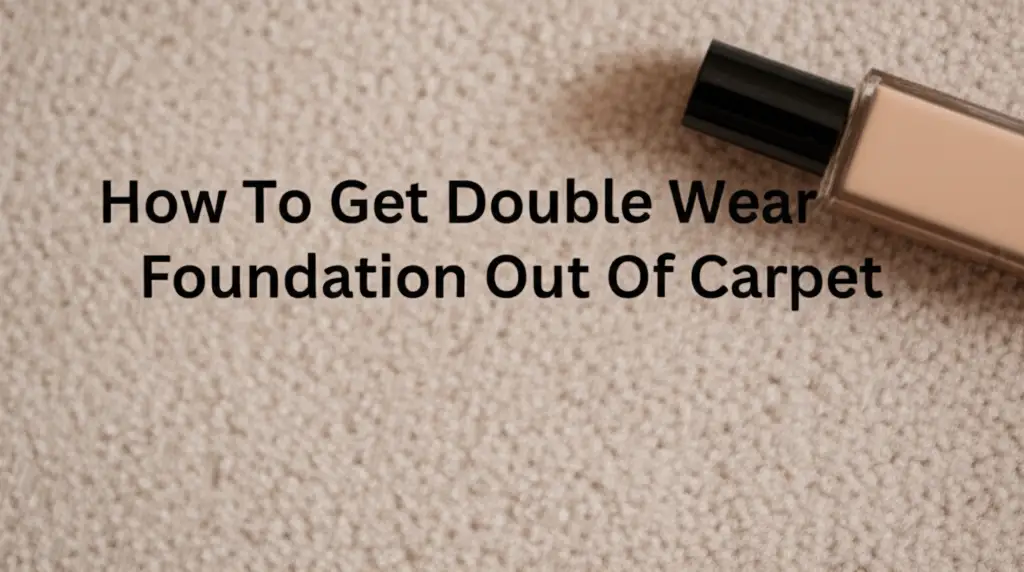· Elira Thomsen · Carpet Care · 13 min read
How To Get Theraputty Out Of Carpet

How to Get Theraputty Out of Carpet: Your Ultimate Guide
Discovering a blob of Theraputty on your carpet can feel like a mini-disaster. Its unique texture makes it stick firmly to fibers, creating a challenging mess. But do not worry; getting Theraputty out of carpet is possible with the right approach. I have dealt with this sticky situation myself, and I am here to share effective strategies. This guide will walk you through proven methods, from freezing to gentle chemical treatments, ensuring your carpet returns to normal.
Takeaway:
- Act quickly to remove as much Theraputty as possible.
- Freeze the Theraputty to harden it for easier removal.
- Use rubbing alcohol or specific removers for stubborn residue.
- Always test cleaning solutions on a hidden area first.
- Finish with a thorough carpet cleaning to restore the area.
Theraputty removal from carpet requires a two-step approach: first, harden the putty with cold, then use a mild solvent for any remaining residue. Begin by scraping off excess, then apply ice to freeze the material. Once frozen, gently break and pick off the hardened pieces. Follow up with rubbing alcohol or a specialized cleaner to dissolve the last traces, then blot clean.
Understanding Theraputty and Its Unique Challenges
Theraputty is a silicone-based material, different from regular play-doh or slime. Its unique composition makes it a fantastic tool for hand therapy and strengthening exercises. However, this same quality, its elasticity and adherence, makes it notoriously difficult to remove from carpet fibers. It can stretch and cling deeply into the pile.
When Theraputty gets pressed into carpet, it wraps around individual strands. Standard cleaning methods often just push it deeper or smear it. This means you need specific techniques to tackle its sticky nature effectively. Understanding its properties helps you choose the right removal strategy. We aim to break its bond with the carpet fibers without damaging them.
Gathering Your Tools: What You’ll Need for Theraputty Removal
Before you start, gather all necessary items. Having everything ready saves time and makes the process smoother. You probably have most of these supplies in your home. Preparation is key to successfully removing Theraputty from your carpet. Do not skip this important step.
Here is a list of tools and materials you should have on hand:
- Ice packs or ice cubes in a plastic bag: Essential for the freezing method.
- Blunt knife, spoon, or old credit card: For scraping off hardened putty.
- Rubbing alcohol (isopropyl alcohol): A common solvent for silicone.
- Cotton balls or clean white cloths: For applying solvent and blotting.
- Paper towels: For absorbing liquids and blotting.
- Dish soap (mild liquid soap): For a final clean-up.
- Warm water: For rinsing.
- Vacuum cleaner: For picking up small pieces.
- Goo Gone or WD-40 (optional): For very stubborn stains.
- Hair dryer (optional): To warm residue slightly if needed, though caution is advised.
- Stiff brush or old toothbrush: For working cleaners into fibers.
- Small bowl: For mixing cleaning solutions.
Having these items ready ensures a smooth and effective cleaning process. I always find that a well-prepared workstation makes any cleaning task much less daunting.
The Freezing Method: A First Line of Attack for Theraputty Stains
The freezing method is often your best initial approach for Theraputty on carpet. Cold temperatures cause the putty to harden and become brittle. This makes it easier to break off and remove from the carpet fibers. This method works well for various sticky messes, not just Theraputty. I have used it successfully on other sticky substances like chewing gum.
Here are the steps to follow for the freezing method:
- Remove Excess Putty: First, use a blunt knife, spoon, or old credit card to gently scrape off as much loose Theraputty as you can. Do not press too hard or spread the putty further into the carpet. You just want to remove the surface layer.
- Apply Ice: Place ice cubes in a plastic bag or use an ice pack directly on the Theraputty stain. Hold the ice on the spot for about 10-15 minutes, or until the putty becomes hard and brittle. You will feel it firm up under the ice.
- Break and Scrape: Once the Theraputty is frozen solid, use your blunt tool to gently break it into smaller pieces. As it breaks, carefully scrape these pieces away from the carpet fibers. Work from the outside of the stain towards the center. You might need to reapply ice if the putty starts to soften.
- Vacuum: After removing the larger pieces, vacuum the area thoroughly. This will pick up any small, brittle fragments that remain. Make sure your vacuum is set appropriately for carpet. If you need tips on vacuum settings, you might find this article useful: What is low carpet and high carpet setting on vacuum.
This method is effective for removing the bulk of the Theraputty. It reduces the amount of solvent you will need later.
Using Solvents and Cleaning Agents for Stubborn Theraputty
After freezing and scraping, you may find a sticky residue left behind. This is where solvents come into play. They help dissolve the oils and polymers in the Theraputty, allowing you to lift the remaining stain. Always remember to test any solvent on an inconspicuous area of your carpet first. This prevents potential damage or discoloration.
Here are some effective solvents and how to use them:
H3: Rubbing Alcohol (Isopropyl Alcohol)
Rubbing alcohol is a common household item that works wonders on many sticky stains. It breaks down the silicone in Theraputty. This makes it easier to blot away.
- Dampen a Cloth: Pour a small amount of rubbing alcohol onto a clean white cloth or cotton ball. Do not saturate the carpet directly.
- Blot the Stain: Gently blot the remaining Theraputty residue with the alcohol-dampened cloth. Work from the outside edge of the stain inwards to avoid spreading it. You will see the putty transfer onto your cloth.
- Repeat and Rinse: Continue blotting with fresh sections of the cloth until the residue is gone. Afterwards, dampen a clean cloth with plain water and blot the area to rinse out any alcohol. This helps prevent damage to the carpet fibers.
H3: Goo Gone or WD-40
For particularly stubborn or old Theraputty stains, commercial products like Goo Gone or WD-40 can be very effective. These products are designed to break down greasy and sticky residues. I have found them to be powerful solutions for tough stains, similar to how one might tackle other difficult spills like cheese or makeup. For instance, removing sticky cheese from carpet can also benefit from similar approaches to loosening the bond: How to clean cheese out of carpet.
- Apply Sparingly: Apply a small amount of Goo Gone or WD-40 directly onto the remaining stain. Be careful not to oversaturate the area.
- Let It Sit: Allow the product to sit on the stain for a few minutes, as directed by the product instructions. This gives the solvent time to work.
- Blot and Scrape: Use a clean cloth to blot the stain, or a blunt tool to gently scrape away the softened putty. The residue should lift easily.
- Clean with Soap and Water: These products can leave an oily residue. You must clean the area thoroughly afterwards. Mix a few drops of mild dish soap with warm water. Dampen a clean cloth with this solution and blot the area to remove the solvent residue. Rinse with a clean, water-dampened cloth.
Remember, patience is key when using solvents. Do not rub vigorously, as this can damage carpet fibers or spread the stain.
Dealing with Residue and Final Carpet Cleaning Steps
Once the main Theraputty is gone, you might still have some residue or a faint discoloration. This is normal. The final cleaning steps are crucial to restore your carpet’s appearance and feel. This stage ensures all cleaning agents are removed and your carpet is fresh. This comprehensive approach is much like any deep carpet cleaning process, whether you’re dealing with a specific stain or just general grime. You might even consider if Does steaming a carpet clean it could be a beneficial next step for a deeper clean.
Here’s how to complete the process:
- Mild Soap Solution: Mix a small amount of mild liquid dish soap with warm water in a bowl. You want a very dilute solution, just enough to create light suds.
- Blot the Area: Dip a clean white cloth into the soap solution. Wring it out so it is just damp, not soaking wet. Gently blot the treated carpet area. This helps lift any remaining cleaning product residue and further cleans the carpet fibers. Work from the outside of the treated area towards the center.
- Rinse with Water: Get another clean cloth and dampen it with plain warm water. Blot the area again to rinse out the soap solution. It is important to remove all soap, as soap residue can attract dirt over time. Repeat this step if necessary, using a fresh part of the cloth each time.
- Dry Thoroughly: Place several layers of clean paper towels or a thick, clean towel over the damp area. Press down firmly to absorb as much moisture as possible. You can also place a heavy object on top of the towels to help with absorption. Allow the area to air dry completely. Pointing a fan at the spot can speed up drying.
- Fluff the Fibers: Once the carpet is completely dry, use your fingers or a soft brush to gently fluff up the carpet fibers. This helps restore the texture and appearance of the cleaned area. Your carpet should look as good as new.
These final steps ensure no sticky or soapy residue remains, leaving your carpet clean and fresh.
Preventative Measures: Keeping Your Carpet Theraputty-Free
Prevention is always better than cure, especially with sticky messes like Theraputty. Taking a few simple steps can save you a lot of cleaning effort in the future. These measures are easy to implement and can protect your carpet from various spills and stains. Just like you might consider ways to protect your carpet from general wear, like What can I put over carpet to protect it, these tips are about safeguarding against specific incidents.
Here are some practical tips to keep your carpet safe from Theraputty:
- Designate a Play Area: If Theraputty is used for therapy or play, establish a specific “Theraputty Zone.” This area should ideally be on a hard surface like tile or wood flooring. This makes any spills much easier to clean.
- Use a Protective Mat: Place a large, washable mat or a plastic tablecloth under the area where Theraputty is used. This acts as a barrier, catching any dropped pieces. Look for mats with non-slip backing to keep them in place.
- Supervise Children and Patients: Close supervision during Theraputty use can prevent accidents. Make sure users understand the importance of keeping the putty off the carpet.
- Store Properly: Always put Theraputty back in its container immediately after use. This prevents accidental spills and keeps the putty from drying out. A secure lid is essential.
- Educate Users: Explain to anyone using the Theraputty why it is important to keep it off soft surfaces. Education helps foster responsible use.
- Create Clear Boundaries: If a specific room is carpeted, set rules about where Theraputty is allowed. For instance, “no Theraputty in the living room” can be a simple rule.
- Consider Portable Activities: If Theraputty is used frequently, consider using it at a table or desk. This provides a contained workspace and keeps it away from floor coverings.
Implementing these simple preventative measures can significantly reduce the risk of future Theraputty stains on your carpet. I have found that a little foresight goes a long way in maintaining a clean home.
When to Call a Professional Carpet Cleaner
Despite your best efforts, some Theraputty stains can be incredibly persistent. If the stain is large, deeply embedded, or you are worried about damaging your carpet, it might be time to call in a professional. Professional carpet cleaners have specialized equipment and stronger cleaning solutions. They can often remove stains that home remedies cannot. They also understand different carpet materials and their unique cleaning needs, which is crucial for effective treatment. Sometimes, a stubborn stain is best left to someone with extensive experience, much like knowing when to consult a professional for general carpet upkeep or major cleaning projects. For those looking for extensive carpet cleaning, for instance, learning how to get How to get business carpet cleaner or even finding a convenient Where can I get a carpet cleaner rental can be the next best step for large-scale cleaning.
Here are situations when you should consider professional help:
- Large or Deep Stains: If a significant amount of Theraputty is pressed deep into the carpet pile.
- Delicate Carpet Materials: Some carpets, like wool, silk, or antique rugs, require special care. Harsh DIY methods can cause irreversible damage. Professionals know how to handle these materials.
- Failure of Home Methods: If you have tried several methods described above and the stain remains or worsens.
- Time Constraints: If you lack the time or patience to deal with a persistent stain yourself.
- Odor or Residue Concerns: Professionals can ensure all sticky residue and cleaning product chemicals are thoroughly removed, preventing future dirt attraction or odors.
Do not feel discouraged if you need professional help. It is a smart decision to protect your investment in your carpet.
FAQ Section
Is Theraputty toxic?
Theraputty is generally non-toxic. It is made for therapeutic use and contact with skin. However, it is not meant for ingestion. Always keep it away from pets and young children who might try to eat it. If ingested, consult a medical professional.
Can I use heat to remove Theraputty?
No, do not use heat to remove Theraputty. Heat will make the putty softer and more pliable, causing it to melt deeper into the carpet fibers. This can make the stain much harder to remove and potentially set it permanently. Always use cold to harden it first.
Will Theraputty permanently stain carpet?
Theraputty usually does not cause a permanent stain if you treat it correctly and quickly. Its silicone base means it mostly adheres physically. Prompt action and the right cleaning methods can remove it entirely. Leaving it untreated for long periods can make it more challenging to remove completely.
What if I don’t have rubbing alcohol?
If you do not have rubbing alcohol, you can try other oil-based solvents. Products like Goo Gone, WD-40, or even mineral spirits can work. Always remember to test these products on a hidden area of your carpet first to ensure they do not cause discoloration or damage.
How do I clean my carpet after removing the stain?
After removing the Theraputty stain, clean the area with a mild dish soap solution. Mix a few drops of soap with warm water, blot the area with a clean cloth, then rinse by blotting with a water-dampened cloth. Blot dry thoroughly with towels. This removes any residue and refreshes the carpet.
Conclusion
Getting Theraputty out of carpet might seem like a daunting task, but it is entirely manageable with the right steps. I have shown you that a combination of freezing, careful scraping, and targeted solvent use can effectively remove even stubborn stains. Remember, acting quickly and using patience are your best allies in this cleaning challenge. Always prioritize testing any cleaning solution on a hidden spot first to protect your carpet.
By following these methods, you can restore your carpet’s original look and feel. Do not let a sticky spill ruin your day. With these simple tips, you are now equipped to handle Theraputty mishaps with confidence. If you encounter a particularly tough situation, remember that professional carpet cleaners are always an option. Keep your home cosy and clean!





